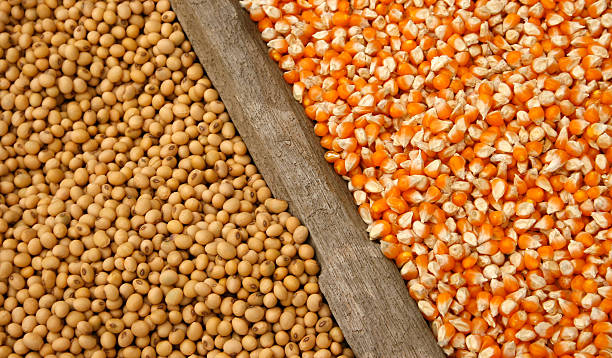In the March 13, 2023, Southern Ag Today article, Mark Welch discussed the soybean-to-corn price ratio and its implications for 2023 planting decisions. This article uses the same methods to examine the ratio and its impacts on 2024/25 new crop prices in the next few months, prior to USDA’s Ag Outlook Forum, which releases the first crop estimates for the 2024/25 marketing year and could have an impact on nearby futures prices. It additionally gives a way-too-early projection on corn/soybean acreage for next year.
At last year’s Ag Outlook Forum on February 23, 2023, USDA projected an extra million acres of corn for 2023. This forecast resulted in a drop in the May Corn Futures price by nearly $0.37 in the four days following the report. As we progressed through the marketing year, corn acreage continued to increase, pushing the corn price lower and lower. The near-record acreage and high yields resulted in record corn production in 2023. As U.S. producers typically follow a corn/soybean rotation, this raises the question of whether the United States is primed for expanded soybean acreage in 2024. If the USDA projects expanded soybean acreage at this year’s Ag Outlook Forum, similar price declines to 2023 corn futures could occur in soybeans in 2024.
Another indicator for soybean acreage is the soybean-to-corn price ratio, which is the November soybean futures price divided by the December corn futures price. Typically, a ratio higher than 2.5 results in soybean acreage closer to the number of corn acres. On the contrary, a ratio lower than 2.5 indicates that there will be a larger amount of corn acreage in the United States. Figure 1 shows the corn/soybean ratio on January 15 plotted against the difference in corn and soybean acres, described here as excess corn acreage. The past ten years of ratios on January 15 explain nearly 35% of the variation in excess corn acreage (corn acreage typically exceeds soybean acreage with the exception of 2018). Current ratios indicate that we will have more soybean acreage than last year; however, the simple estimation in this study does not account for other factors that affect corn and soybean prices, such as fertilizer prices and previously planted acreage. Considering both of these factors, the number of soybean acres is still likely to expand due to planted acreage, but how much expansion occurs remains a question.
This simple analysis indicates we could have 6.6 million more corn acres than soybeans in the United States compared to 11 million acres last year. Depending on how things play out, the Ag Outlook Forum reports released February 15-16 could greatly impact soybean prices, which should be kept in mind when marketing old crops in the near future. Soybean prices have been falling lately, and corn prices have yet to rebound. It remains possible that corn will try to buy some acres back in the near future, pushing corn futures slightly higher as soybean prices decline.

Sources
Barchart.com. Historical Corn and Soybean Futures Charts. Accessed January 17, 2024.
USDA, NASS Quickstats, accessed January 17, 2024.
Welch, Mark. “The Soybean to Corn Price Ratio as a Guide to Farmers’ Planting Decisions.” Southern Ag Today 3(11.1). March 13, 2023. Permalink
Gardner, Grant. “A Way-Too-Early Soybean-to-Corn Price Ratio Analysis: Price Implications and Planting.” Southern Ag Today 4(5.1). January 29, 2024. Permalink

